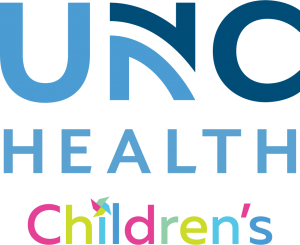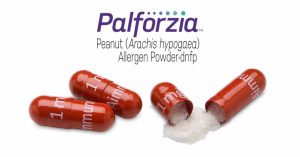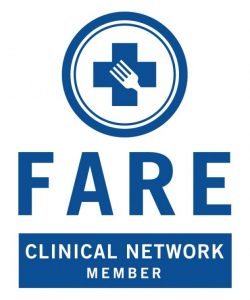UNC Food Allergy Initiative E-Newsletter

August 2020
Update on UNC Allergy Clinics and Research
It has never been a better time to be tech savvy! Routine allergy visits for the UNC Health Systems adult and pediatric clinics have mostly been converted to video or telephone visits to ensure continuity of care during this time. All necessary in-person pediatric allergy visits are taking place at the Blue Ridge Rd satellite specialty clinic to limit the number of patients coming to the main hospital campus.
Clinical research began ramping back up under the phased reopening plan for North Carolina as of June 1. Our research labs and clinics are taking all necessary precautions to ensure the safety of all participants and personnel.
COVID-19 and Allergies
In the news, there have been some concerns over how the COVID-19 pandemic is affecting food allergic individuals as they try to shop for specialty brands and products which are free of known allergens. The current trend of hoarding while grocery shopping has impacted the supply and demand model of how the food industry is able to serve its customers. Many food allergic individuals rely on specific food substitutions to cook and prepare safe food, and the empty shelves at grocery stores have made this increasingly difficult and created another layer of anxiety around their food allergies.

In recent, but long awaited news, the first ever treatment for peanut allergy was approved by the Food and Drug Administration on Jan. 31, 2020. The product studied under the name of AR101 is now known as Palforzia and is a form of oral immunotherapy (OIT) approved for ages 4-55 years. It is manufactured by Aimmune Therapeutics, and the first dose was given by Dr. Brian Vickery to one of his patients at Children’s Healthcare of Atlanta’s allergy clinic. Though the product has not yet been made widely commercially available, we expect the rollout of Palforzia programs to increase in the coming months, including a program available at UNC’s pediatric allergy clinic.

Amongst nine other sites across the country, the UNC Food Allergy Initiative has been selected as an FCN Discovery Center of Distinction in the FARE Clinical Network (FCN). FARE (Food Allergy Research & Education) is the world’s leading food allergy research, advocacy and education organization.
As leader of a Discovery Center of Distinction, the FAI will conduct new research on treatments, diagnostics, prevention and improvements to care. Through participating in the network, the new center will also serve as a site for clinical trials and basic/translational research on food allergy, assist in the development of new therapeutics, help carry out multi-center investigations, as well as help train the next generation of food allergy investigators.
FARE is the world’s largest food allergy research organization. FARE works with leading research institutes across the country to ensure that the 32 million Americans living with potentially life-threatening food allergies have access to diagnosis, treatment, and care that will lead to improved patient outcomes.
With over 11,000 participants and growing, the FARE Patient Registry works with “citizen scientists” who complete surveys about their/their child’s food allergy experiences to help advance food allergy science. These unique patient perspectives provide an opportunity for clinicians and researchers to gain a better understanding of what it is like to live with food allergies. In addition, the Patient Registry ensures that when FARE advocates for patients, supports critical new treatment therapies, promotes operational enhancement patient care and provides educational resources to the food allergy community, it is from a point of deep understanding. To learn more please about the FARE Patient Registry, please visit: FAREregistry.org
Current Studies with the Food Allergy Initiative
The FAI continues to participate in ongoing clinical trials for food allergy involving oral immunotherapy, skin patches, sublingual immunotherapy, and injectable biologics. To read more about our ongoing industry sponsored and investigator initiated trials, please click on the link below.
If you are interested in one of our studies, click here!

The UNC FAI has been designated as the CoFAR central biomarker facility for the OUTMATCH trial. In this role, we are responsible for performing allergen-specific IgE testing at screening, as well as conducting basophil activation tests (BATs), measuring allergen-specific IgE, IgG, and IgA throughout the course of treatment. As of April 2020, we have conducted 427 screening IgE tests on 95 distinct participants, along with 211 BATs on 50 individuals. Another important role as the biomarker facility is to store biological specimens, such as plasma and white blood cells, and other types of specimens such as saliva, urine, and stool. These studies will help us understand the underlying biology associated with Xolair and multi-food OIT in allergic subjects.
Important Findings from the annual American Academy of Allergy Asthma & immunology (AAAAI) Conference
- Lanser, et al Effect of Demographics and Baseline Clinical Characteristics on the Treatment Response to AR101: Results From PALISADE
- Peanut-allergic subjects ages 4-17 years treated with AR101 peanut OIT showed strong desensitization (tolerating ~3-4 peanuts, 1044 mg) leading to the recent approval of Palforzia.
- Higher risk subjects with a history of anaphylaxis or asthma or multiple food allergies were just as likely to respond to treatment as those without these baseline factors.
- Both younger (ages 4-11 years) and older children (ages 12-17 years) showed good treatment response, however there was a suggestion of stronger response in young children.
- Pongracic, et al. Results of the REALISE (Real-life Use and Safety of EPIT) Study: A Multicenter Blinded Randomized Controlled Trial Investigating the Safety of Epicutaneous Immunotherapy for Peanut Allergy in Peanut-Allergic Children
- Safety study evaluating 393 peanut-allergic subjects (avg age 7 years) treated with 250 mcg Viaskin peanut patch
- Most subjects experienced local patch site reactions, however the severity of reactions decreased over the first 3-6 months of treatment
- Only 0.7% of treatment-emergent adverse events were graded as severe and 7 out of 294 subjects required epinephrine to treat an adverse event
Recently Published
- Kim, et al. Induction of sustained unresponsiveness after egg oral immunotherapy compared to baked egg therapy in egg-allergic children (CoFAR7 study)
- 50 egg-allergic but baked egg tolerant subjects were treated with 2 years of either a baked egg muffin or egg OIT.
- 15% of baked egg subjects were desensitized and able to safely ingest ~1 egg (7444 mg egg white protein) compared to 78% treated with egg OIT
- 11% of baked egg subjects remained unreactive (SU) 8-10 weeks after stopping treatment compared to 44% of egg OIT subjects.
- Baked egg may not have as strong of a treatment effect as originally thought and egg OIT may be a treatment option even in children who can tolerate baked egg.
- Fleischer, et al. Long-Term, Open-Label Extension Study of the Efficacy and Safety of Epicutaneous Immunotherapy for Peanut Allergy in Children: PEOPLE 3-Year Results.
- Subjects completing the phase 3 PEPITES epicutaneous immunotherapy study were treated for an additional 2 years with the 250 mcg Viaskin peanut patch.
- 76% of subjects had an increase compared to baseline of their reaction causing eliciting dose (ED)
- 52% of subjects had an ED of >=1000mg (3-4 peanuts) after 36 months of treatment compared to 40% after 12 months.
- Extended treatment with EPIT maintains and possibly improves the treatment effect of the peanut patch
- Cook, et al. Dosing, Safety, and Quality of Life After Peanut Immunotherapy Trials – a long-term follow up study
- 55 subjects who completed a clinical trial of peanut OIT or peanut SLIT completed a questionnaire on home peanut ingestion practices
- 89% of subjects were eating peanut in their diet (median amount 2 peanuts, 600 mg) and 64% reported eating peanut daily
- Most subjects ingested food with peanut precautionary labels and participated in unsupervised social activities, however only 85% of subjects carried epinephrine often and 60% of subjects were seeing an allergist regularly.
- While peanut OIT and SLIT may allow for the introduction of small amounts of dietary peanut, ongoing counseling on peanut avoidance will be essential to maintaining patient safety